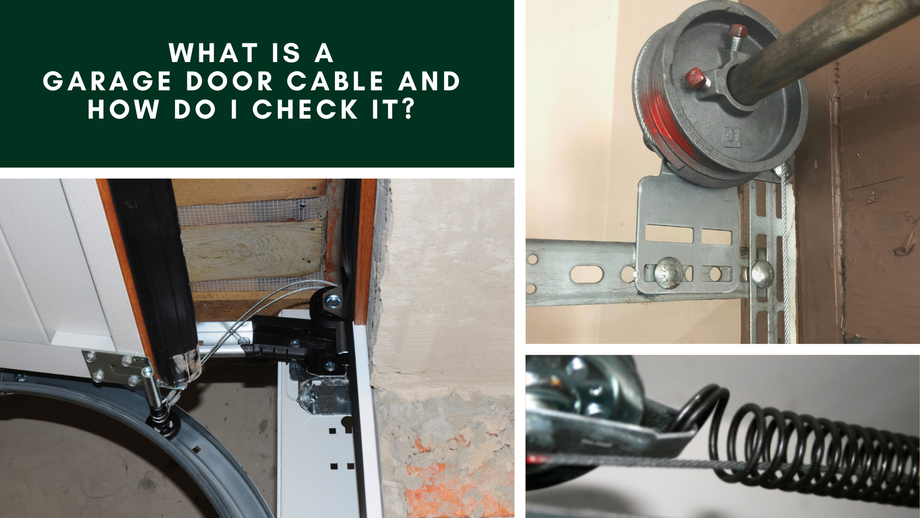The cables are an essential part of an overhead garage door system. They are crucial to the garage door's functionality, and any failure could be dangerous. This article will go over exactly what garage door cables are and how to inspect them for damages.
What are garage door cables?
Garage door cables are the steel wire strands that pull the door up or down through pulleys attached to either end of the door when the opener is turned on. The role of the cables is to deliver the torsion or extension springs' lifting force to your door's bottom brackets. There are two types of cables used in garage doors: lift cables and safety cables. Lift cables and sometimes retention (safety) cables are also used to counterbalance garage doors.
Lift cables are wrapped around the drums or sheaves and secured to the door's bottom fixture brackets on both sides. Cable drums are used in torsion spring systems, whereas sheaves are utilized in extension spring systems. Safety cables are usually found inside the hollow core of extension springs. If the spring breaks, they prevent broken parts from flying off and hitting something or someone within the garage. Torsion springs do not require holding cables because they are permanently attached to a tube or shaft.
Common garage door cable problems
Cables slipping off the drums
Slack in the cables and a broken cable are the two most common causes why cables come off the drums. A well-functioning cable drum assembly relies on properly tensioned cables. Broken springs and cable corrosion are the frequent reasons for the slack. Keeping continuous tension throughout your door's entire opening and closing cycle is essential for safe and effective operation. It is pretty routine to reset or replace garage door cables, but it is even more crucial to discover what is causing the issue.
Snapped cables
Friction against another metal element, corrosion, and abrupt descents due to a broken spring are the most prevalent causes of damaged cables. Lift cables are built to bear a great deal of force, with several breaking strengths exceeding 1,000 pounds. Constantly grinding against another hard object causes cables to fray, while exposure to water or salt leads to corrosion. If one or both springs fail while the door is open, the force of the door crashing down could quickly result in cable failure.
How to check garage door cables?
Physically examine the lifting cables on your garage door and look for kinks or frayed parts. Pay close attention to the areas of the cable near the roller bracket's bottom as they deteriorate more quickly due to moisture exposure. If you notice frayed spots, try to figure out what caused the damage. Something protruding in the cable path could be the source of the problem. It is also crucial to keep the wires free of debris and avoid using heavy lubricants, which might collect dirt.
Check if you have the proper cable drum configuration. Cables will slip off the drums if the wrong size or type of drum is used with a specific track setup. The drums' grooves are designed to suit different cable diameters. When your cables are too small or too large for the drum, they will fall out of the grooves. Make sure that the garage door springs are under constant tension. The cables will slip if the tension on your torsion springs is incorrect.
Palms Garage Doors is a garage door repair company serving the Greater Bay Area from San Francisco to San Jose and up to Oakland. Our services include garage door maintenance, garage door installation, and emergency garage door repair. Give us a call at (833) 833-3361 or visit

